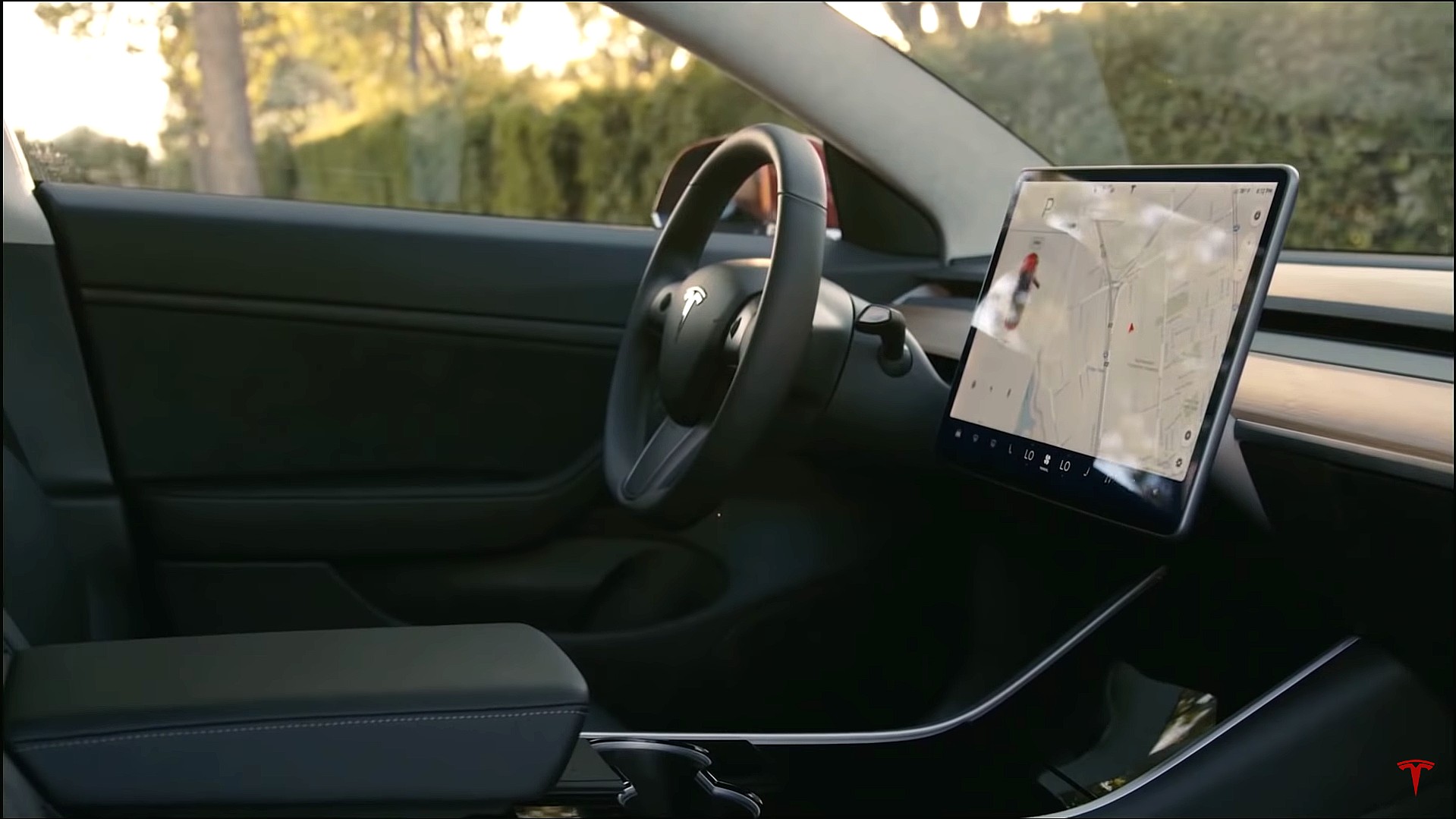
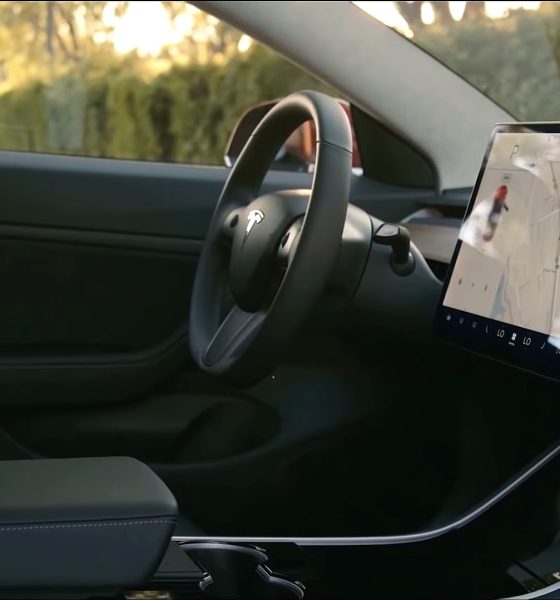
News
Tesla points to better range and efficiency with compact power steering patent
Tesla’s electric cars are already among the most efficient vehicles on the market, and this is shown by the immense gap between the range and efficiency of the company’s vehicles compared to their competitors from veteran automakers. Part of the reason behind this is Tesla’s continued improvements in its vehicles, which are rolled out and adopted as soon as they are refined and ready.
One of these improvements appears to have been teased in a recently-published patent application. Simply titled “Steering System for a Vehicle,” the document describes a smart, novel way of designing a power steering system that is more compact and less power-hungry. In the patent’s background, Tesla remarked that conventional power steering systems, which are usually hydraulically operated, are mostly bulky and space-consuming.
This is due to power steering systems utilizing a number of components that include cylinders, pumps, hoses, and control valves, to name a few. Hydraulic power steering systems also have complex designs, which add cost to a vehicle. Lastly, conventional power steering systems generally require a large amount of power to function. With this in mind, Tesla argues that there is a need for a new power steering system that is simpler, smaller, and more power-efficient.

Tesla’s novel power steering design involves fewer parts than the conventional system used in most vehicles. The electric car maker describes the design in its patent in the description below.
“The steering system includes a drive motor having a motor shaft. The steering system also includes a first gear reduction stage for receiving a first rotational input from the motor shaft and providing a first rotational output. A first gear meshes with a second gear of the first gear reduction stage via a helical gear mesh. The steering system further includes a second gear reduction stage for receiving the first rotational output from the first gear reduction stage and providing a second rotational output.
“The second gear reduction stage may include at least one of a strain wave gearing, a worm drive, and a planetary gearing. In case the second reduction stage is a strain wave gearing, the second gear reduction stage includes an ovular coupler, a flexible coupling, an outer spline, and a plurality of bearing members disposed between the ovular coupler and the flexible coupling. The steering system includes an output shaft for receiving the second rotational output from the second gear reduction stage.”
Tesla notes that its smaller, power-saving steering system, apart from being more power-efficient and compact, also includes several failsafes, which could, in turn, increase a vehicle’s safety. The company’s patent mentions “sacrificial or failsafe components,” which are designed to safeguard a vehicle’s sensitive components during the event of a breakdown. Such a design will likely contribute to Tesla’s electric cars and their already-stellar safety ratings.
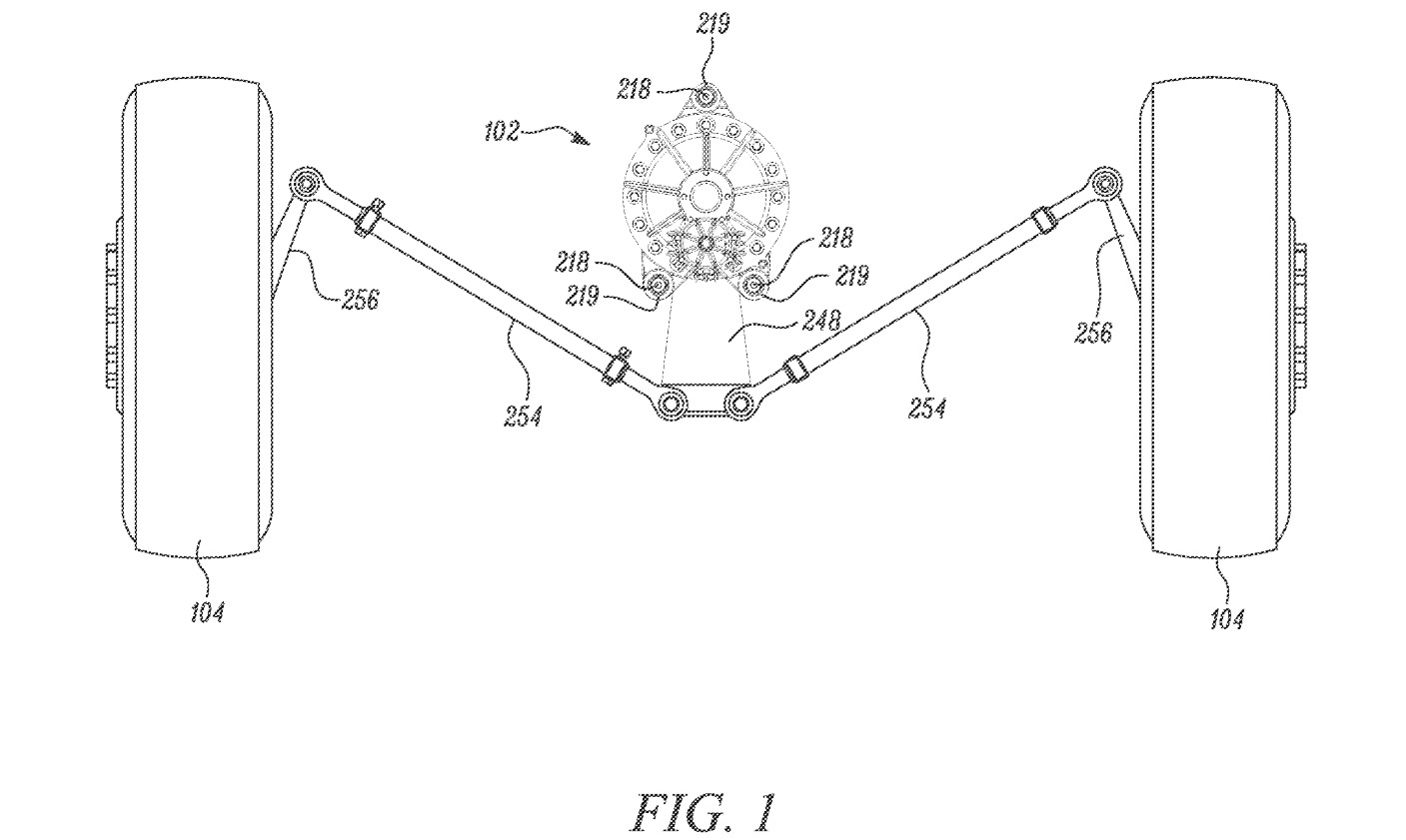
“In some embodiments, steering system 102 has been shown to provide a 10% improvement over a hydrolytic steering system. Additionally, steering system 102 is a compact unit that consumes lesser space as compared to other steering systems that are commercially available in markets. Further, steering system 102 does not require large amount of additional power for operation. FIG. 6 illustrates a failure mode of steering system 102 in which one or more bearing members 244 of steering system 102 fail. Bearing members 244 of steering system 102 are designed to withstand high loads so that they do not fail during normal vehicle operation. However, bearing members 244 may be designed to withstand only a predetermined threshold of load. As a result, bearing members 244 fail when they are loaded beyond the predetermined threshold.
“For example, a bearing member 258 may eventually fail along a shear plane 260 when loaded beyond the predetermined threshold. Alternatively, bearing members 244 may undergo a bending failure, or any other type of failure. In such a situation, one bearing member 244 is a sacrificial or failsafe components, thereby safeguarding other components of vehicle, for example, drive motor 204 or an engine, against breakdown or seizing. More particularly, the one bearing members 244 fails, ovular coupler 238 locks and rotates with flexible coupling 240. Thus, steering system 102 can still be operated to allow vehicle to be driven for a certain distance and parked at an appropriate location. Bearing member 244 fails according to a sheer mechanism or another failure mechanism. Further, failed bearing member 258 can be replaced and vehicle can be reinstated without incurring any additional losses.”
It remains to be seen if Tesla’s compact power steering system will be adopted for the company’s upcoming vehicles. That being said, such a system is a perfect match for EVs such as the Tesla Semi, the Tesla Pickup Truck, and the Model S and X Plaid Powertrain variants. These are all large vehicles, and their success in the market will likely be determined in no small part by their range and efficiency. In this light, every single innovation that could optimize these vehicles’ efficiency will most definitely be appreciated. After all, the less power is consumed by subsystems such as a vehicle’s power steering unit, the more power there is to turn an electric car’s wheels.
The full text of Tesla’s compact, efficient power steering system could be accessed here.

News
Tesla FSD approved for testing in Nacka, Sweden, though municipality note reveals aggravating detail
Nacka, Sweden, a municipality just a few miles from Stockholm, has given its approval for FSD tests.
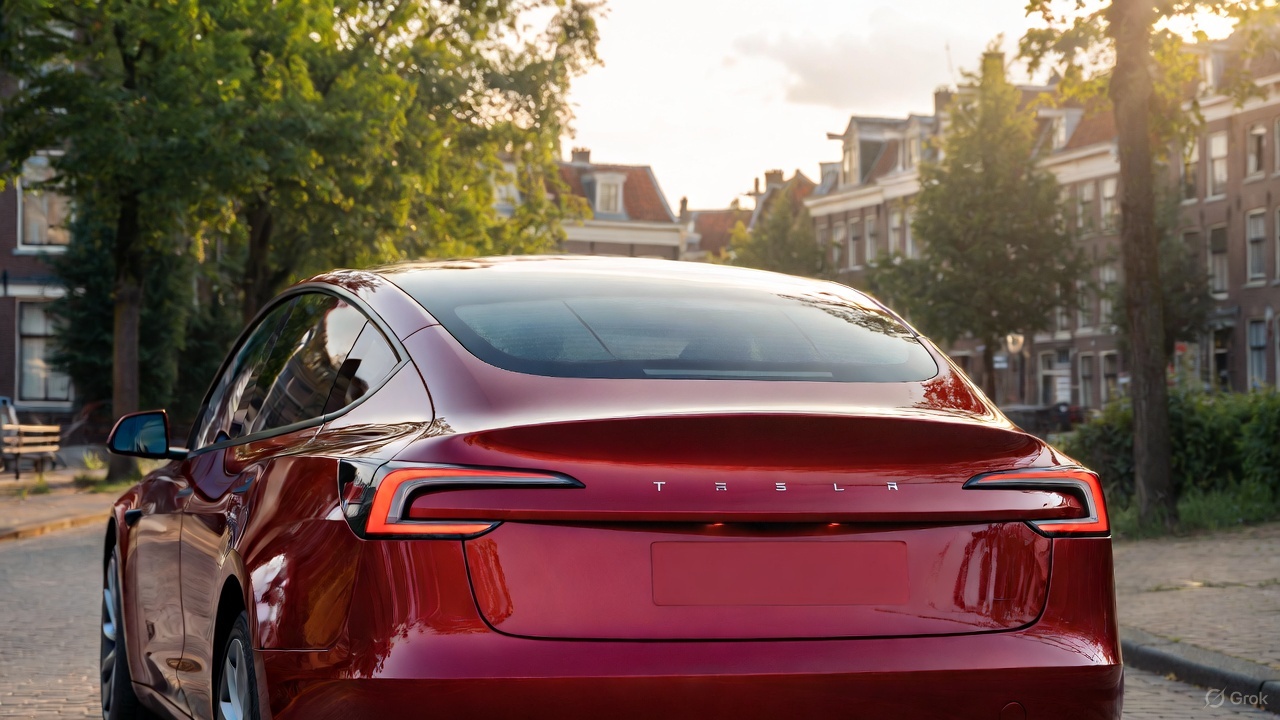
Tesla has secured approval for FSD testing in an urban environment in Sweden. As per recent reports from the Tesla community, Nacka, Sweden, a municipality just a few miles from Stockholm, has given its approval for FSD tests.
A look at the municipality’s note regarding FSD’s approval, however, reveals something quite aggravating.
FSD testing approval secured
As per Tesla watcher and longtime shareholder Alexander Kristensen, Nacka is governed by the Moderate Party. The shareholder also shared the municipality’s protocol notes regarding approval for FSD’s tests.
“It is good that Nacka can be a place for test-driving self-driving cars. This is future technology that can both facilitate mobility and make transportation cheaper and more environmentally friendly,” the note read.
The update was received positively by the Tesla community on social media, as it suggests that the electric vehicle maker is making some legitimate headway in releasing FSD into the region. Sweden has been particularly challenging as well, so securing approval in Nacka is a notable milestone for the company’s efforts.
Aggravating details
A look at the notes from Nacka shows that FSD’s proposed tests still met some opposition from some officials. But while some critics might typically point to safety issues as their reasons for rejecting FSD, those who opposed the system in Nacka openly cited Tesla’s conflict with trade union IF Metall in their arguments. Fortunately, Nacka officials ultimately decided in Tesla’s favor as the company’s issues with the country’s unions are a completely different matter.
“The left-wing opposition (S, Nackalistan, MP and V) voted no to this, referring to the fact that the applicant company Tesla is involved in a labor market conflict and does not want to sign a collective agreement. We believe that this is not an acceptable reason for the municipality to use its authority to interfere in a labor law conflict.
“Signing a collective agreement is not an obligation, and the company has not committed any crime. The municipality should contribute to technological development and progress, not work against the future,” the note read.
News
Tesla Model 3 and Model Y named top car buys in Norway
Despite growing competition from European and Korean brands, both models stood out for their balance of price, performance, and everyday usability.
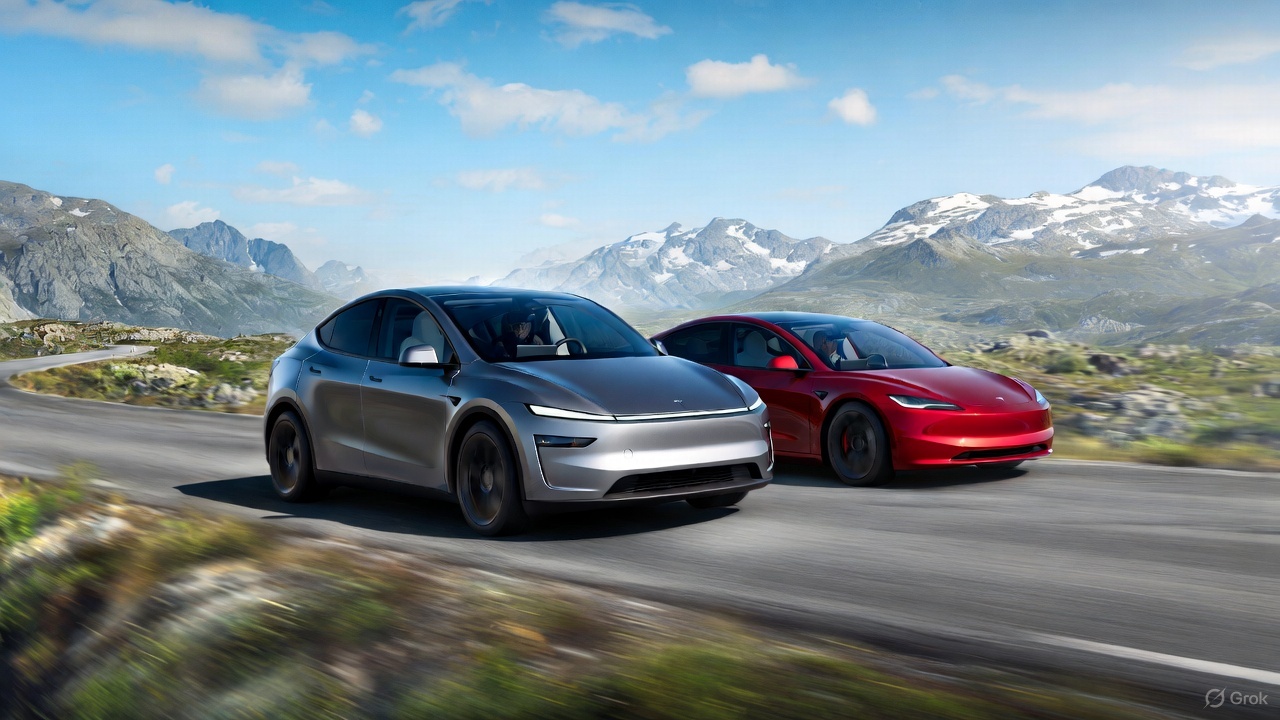
Norway’s annual roundup of the best car purchases featured Tesla’s two main sellers this year, with the Model 3 and Model Y securing top positions in their respective segments.
Despite growing competition from European and Korean brands, both models stood out for their balance of price, performance, and everyday usability. The verdict comes as electric vehicle adoption remained above 95% of new vehicle sales in the country.
Tesla Model 3 strengthens its value position
Among compact EVs, the Tesla Model 3 maintained its position as the best overall buy thanks to its strong blend of performance, efficiency, and updated features. Reviewers noted that every trim offered compelling value, especially with the all-electric sedan’s improved cabin ergonomics and the return of the turn-signal stalk, which was one of the few previous complaints among drivers.
The Model 3’s mix of long-range capability, low operating costs, and responsive handling has continued to set the benchmark for compact EVs in Norway. While competitors from Hyundai, Volkswagen, and Peugeot have narrowed the gap, Tesla’s price-to-capability ratio has remained difficult to beat in this segment, Motor.no reported.
“The Model 3 clearly offers the best value for money in the compact class, no matter which version you choose. Now it also gets the turn signal lever back. This eliminates one of the few flaws in a driving environment that many believe is the best on the market,” the publication wrote.
Tesla Model Y claims its crown
The Tesla Model Y emerged as Norway’s top family-car purchase this year. The latest refresh introduced improvements in ride quality, styling, and interior materials, allowing the Model Y to deliver a more premium driving experience without a substantial price increase.
Reviewers praised its spacious cabin, strong safety profile, and practical range, all of which reinforced its appeal for families needing an all-purpose electric crossover. The Model Y remains especially notable given its continued popularity in Norway even as Tesla faces declining sales in other global markets.
“The Model Y is back as the winner in the family class. The upgrade in the new year was even more extensive than expected. It is a slightly more elegant and significantly more comfortable Model Y that solidifies its position as Norway’s best car purchase in the most important class,” the Norwegian motoring publication noted.
News
Tesla Giga Berlin is still ramping production to meet Model Y demand: plant manager
Tesla Gigafactory Berlin has expanded to two full shifts, as per the facility’s plant manager, and a lot of it is due to Model Y demand.

Tesla Gigafactory Berlin has expanded to two full shifts, as per the facility’s plant manager, and a lot of it is due to Model Y demand. While registrations in some countries such as Sweden have fallen sharply this year, the company’s sales in other key territories have been rising.
Giga Berlin shifts to two shifts
Giga Berlin factory manager André Thierig told the DPA that the facility has been running two shifts since September to manage a surge in global orders. And due to the tariff dispute with the United States, vehicles that are produced at Giga Berlin are now being exported to Canada.
“We deliver to well over 30 markets and definitely see a positive trend there,” Thierig said.
Despite Giga Berlin now having two shifts, the facility’s production still needs to ramp up more. This is partly due to the addition of the Tesla Model Y Performance and Standard, which are also being produced in the Grunheide-based factory. Interestingly enough, Giga Berlin still only produces the Model Y, unlike other factories like Gigafactory Texas, the Fremont Factory, and Gigafactory Shanghai, which produce more than one type of vehicle.
Norway’s momentum
Norway, facing an imminent tax increase on cars, has seen a historic spike in Tesla purchases as buyers rush to secure deliveries before the change takes effect, as noted in a CarUp report. As per recent reports, Tesla has broken Norway’s all-time annual sales record this month, beating Volkswagen’s record that has stood since 2016.
What is rather remarkable is the fact that Tesla was able to achieve so much in Norway with one hand practically tied behind its back. This is because the company’s biggest sales draw, FSD, remains unavailable in the country. Fortunately, Tesla is currently hard at work attempting to get FSD approved for Europe, a notable milestone that should spur even more vehicle sales in the region.









